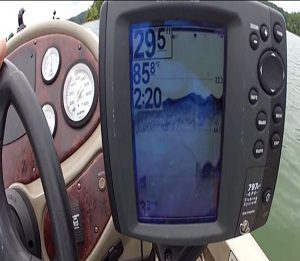 You might be surprised where is my fish finder looking being in the water? Although, the anglers can literally state where their fish finders would be looking in what exact direction, and the width of beam per the setting of sensitivity.
You might be surprised where is my fish finder looking being in the water? Although, the anglers can literally state where their fish finders would be looking in what exact direction, and the width of beam per the setting of sensitivity.
The sound waves certainly have a specific direction to go underwater. Generally speaking, the anglers take it the fish finder is always sending out the sound waves downward (straight down your boat) which is not a true case.
And the good thing is, the fish is everywhere be it a lake, river, or ocean but where exactly the fish finder looks is the real stuff. The anglers may not pay attention to this detail but it is worth keeping checked!
Where is My Fish Finder Looking
This question is always, and always dependent on the type of sonar system your fish finder is supporting.
Where Does The CHIRP-Based Fish Finder Look Underwater
CHIRP-based sonar-backed fish finders send out the vast range of frequencies straight down at a time to get better results, be it the surface, vegetation, and the fish, of course.
Where Does the Conventional 2D Sonar System Look
The Traditional 2D sonar looks down the water but it sends out the sound waves in the individual form (opposite to CHIRP’s signals) making the results mapping pretty slow.
Where Down Imaging Sonar Looks Underwater
Down Imaging sonar also sends out the signal downward but it maps a clearer picture than the traditional 2D and CHIRP-based sonar systems.
Where Does the Side Imaging Sonar Look
The Side Imaging sonar installs on both sides of the boat’s hull. And both transducers are liable to send and receive the signals individually, and at the same time where you would hardly detect any delay in the results.
Those two slices form arcs that can send out signals from 60 to 85 degrees giving plenty of water columns covered.
Frequency/Sensitivity is Another Game Yet to be Tested
Well, we did not particularly cover the importance of frequency or sensitivity because it can let you widen the cone’s beam (widening the sound waves the different sonar systems support) to cover the bigger water body as well as reach the down surface.
So, it is rather your personal game and preferences to ensure how you play with that.
Conclusion!
Given the fact, you can see all the sonar emitting the signals is directly and proportionally dependent on the type of sonar your fishfinder supports.
While this exclusive guide sums up where is my fish finder looking, there remains no hunch left in the process.
This is clear that the anglers do not pay attention to that, and they do not care about knowing the direction at all; rather they focus on the frequency and getting the surface touched.
So, the whole of the guide covers the different sonars from conventional 2D, CHIRP, Down Imaging, and Side Imaging which are the common systems the anglers like to use.
Now, fish with all keeping all the information locked in your mind, and know how and where your fishfinder emits the signals down the water!
- What Do You Need for Fishing - August 18, 2022
- How to Find Offshore Fishing Spots - August 18, 2022
- What to Use for Trout Fishing - August 17, 2022
